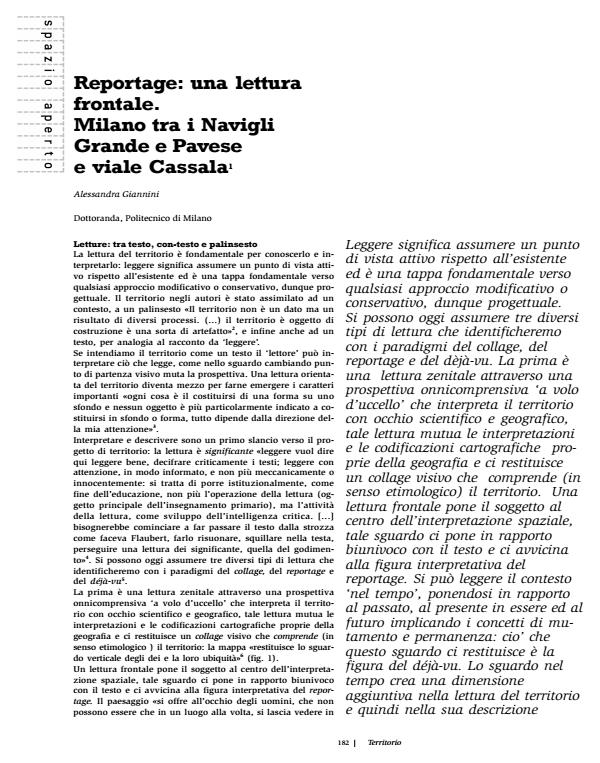Reportage: una lettura frontale. Milano tra i Navigli Grande e Pavese e viale Cassala
Titolo Rivista TERRITORIO
Autori/Curatori Alessandra Giannini
Anno di pubblicazione 2009 Fascicolo 2008/47 Lingua Italiano
Numero pagine 5 P. 182-186 Dimensione file 1891 KB
DOI 10.3280/TR2008-047020
Il DOI è il codice a barre della proprietà intellettuale: per saperne di più
clicca qui
Qui sotto puoi vedere in anteprima la prima pagina di questo articolo.
Se questo articolo ti interessa, lo puoi acquistare (e scaricare in formato pdf) seguendo le facili indicazioni per acquistare il download credit. Acquista Download Credits per scaricare questo Articolo in formato PDF

FrancoAngeli è membro della Publishers International Linking Association, Inc (PILA)associazione indipendente e non profit per facilitare (attraverso i servizi tecnologici implementati da CrossRef.org) l’accesso degli studiosi ai contenuti digitali nelle pubblicazioni professionali e scientifiche
Reportage: a frontal reading. Milan between the Navigli Grande and Pavese canals and viale Cassala - To read means to assume an active viewpoint with regard to what exists and it is a fundamental stage in any approach to modifying or conserving things and therefore in planning them. A focused reading of a geographical area becomes a means of bringing out its important features. Three different types of reading can be assumed today which we will identify with the paradigms of collage, reportage and déjà-vu. The first is a zenithal reading through an all inclusive ‘bird’s eye view’ which interprets the land and its community with a scientific and geographical eye. This reading draws on the cartographical interpretations and codifications of geography and returns a visual collage which comprises the geographical area. A frontal reading places a person at the centre of the spatial interpretation in a one-to-one relationship with the text and it shows us the interpretative figure of reportage. The context can be read ‘over time’ by setting oneself in relation to the past, to the existing present and to the future implying the concepts of change and permanence: what this viewpoint returns is the figure of déjà-vu. Water is a very important feature of the area, both historically and today. Historically the built-up fabric of the district developed originally from the Darsena along the banks of the two canals. This fragmentary dispersion is underlined by the existence of rundown areas and the lack of a heart, a centre for the area.;
Alessandra Giannini, Reportage: una lettura frontale. Milano tra i Navigli Grande e Pavese e viale Cassala in "TERRITORIO" 47/2008, pp 182-186, DOI: 10.3280/TR2008-047020